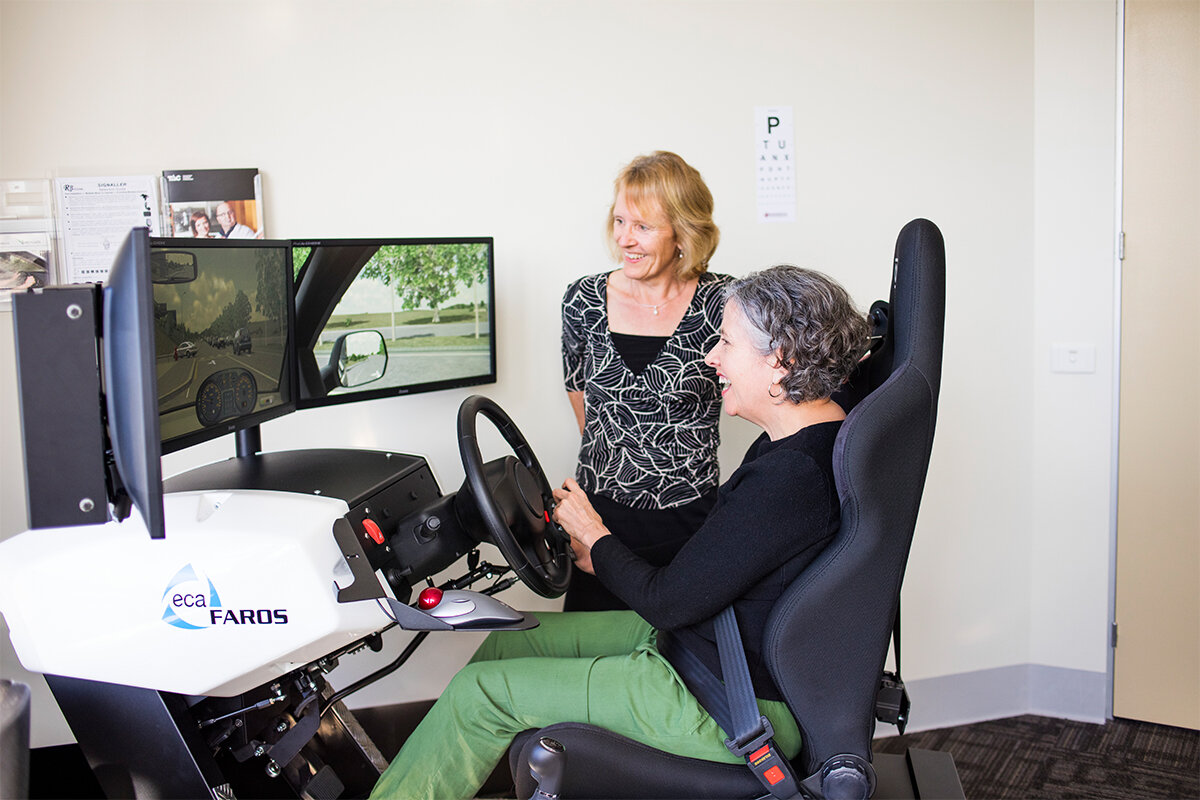For people with an injury, illness or disability, which may impact their capabilities to drive safely, Epworth occupational therapists can assess their driving and help them to return to motoring.
From new learner drivers to elderly motorists, a variety of illnesses and injuries can impair our abilities to drive safely. Victorian laws require licence holders and their medical practitioners to notify VicRoads of any medical conditions that may impact their driving.
Dr Pam Ross is a Senior Occupational Therapist who manages a team of occupational therapists (OTs) with specialist training in driver assessment and rehabilitation at Epworth, which was the first organisation in Australia to offer this service.
“The goal of the whole program is not taking people’s licences away from them. It is looking at getting people back on the road after an illness or injury and how we can support them to continue driving safely.
We also help young people with a disability to work out whether they have the potential to learn to drive and if so, support them in learning to drive.”
Evaluating abilities off the road
The initial assessment is office-based, in which an occupational therapist examines eyesight, brake reaction times, road law knowledge, cognitive abilities and other factors. Epworth is also home to a driving simulator, complete with adaptive equipment, such as steering aids, left foot accelerator pedal and hand controls, that can compensate for some physical disabilities.
“It gives people a chance to learn how to use the adaptive equipment in a stress-free environment before they get in the car and sometimes that helps their confidence. Most people love the driving simulator because it is fun.”
Dr Ross clarifies that although the simulator is helpful, it does not replace an on-road driving assessment.
“It is not like a real-world situation and particularly for the patients who have cognitive issues, you really have to take them out in a car to assess whether their cognitive issues are affecting their safety when driving”
On road driving assessment
If the office-based component is successful, patients undergo an on-road assessment in a dual-control car, with adaptive controls fitted if required.
The on-road test is around 40 minutes and is standardised across Victoria, so similar traffic manoeuvres are conducted in each assessment. A driving instructor in the passenger seat provides directions and an occupational therapist in the rear seat conducts the assessment.
“The first 10 minutes is letting the person settle down, because most people are quite anxious, trying to get them to relax and see what their driving is like. Many people haven’t driven for quite some time”
The occupational therapist assesses their driving skills in different traffic scenarios throughout the session and may recommend driving lessons prior to reassessment.
Transitioning back to driving
Driver rehabilitation sessions with a driving instructor can help to improve abilities and increase confidence with utilising alternative controls, such as steering knobs, before being allowed by VicRoads to return to independent driving.
“There are a few specialised instructors who have this equipment on their cars and usually patients need a few lessons to learn how to drive with this equipment and develop the confidence and skills in a variety of traffic situations. Then they come back to us for a reassessment to make sure that they are safe to drive independently.”
VicRoads are notified of the results of the assessment through an occupational therapy driving report, which provides details of the driver’s abilities and any adaptations required. VicRoads then considers the recommendations and if any licence conditions are necessary Most people return to driving after completing the program.
Epworth offers driver assessment and rehabilitation at Hawthorn and Richmond.
Patients learn to drive again at Epworth
08 July 2021


